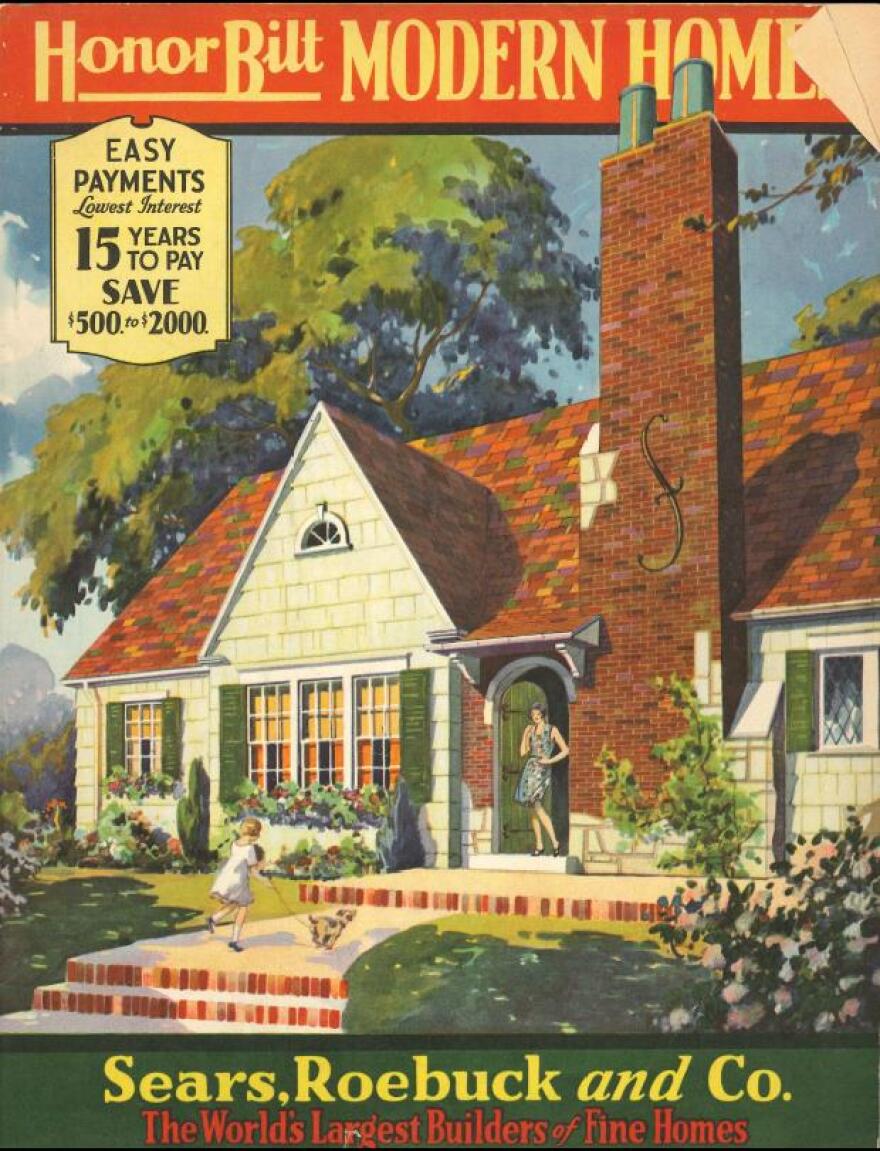Imagine this: you pick up a huge box at the train station, full of lumber and hinges and joints. You drag it away. You open it. You start building. And after days or weeks of hammering and drilling, you’ve built an entire house. Not just a playhouse or a shed. But you, yourself, have built the 3 bedrooms, the 2 bathrooms, the living room and the attic. For thousands of Americans back in the early 20th century, these so-called “kit houses” – ordered from catalogs -- were their homes. Andrew and Wendy Mutch are giving a talk on Michigan’s kit houses on November 2nd at the Kalamazoo Central Library.
Andrew Mutch says that kit houses actually got their start in Michigan, with the Aladdin Company, based in Bay City. He says the company started producing "kit boats" -- which they mailed to owners, who then put them together. Kit houses were just their next step. And from their, he says, national companies like Sears jumped into the game.
We started our talk with Mutch by asking him how he and Wendy first discovered kit homes.
ANDREW MUTCH: So our interest in kit houses actually started because we actually live in! We live in a Sears Hamilton that was built in 1926, built by a young couple who had just gotten married. Shortly after they had gotten married they had a son. And a couple years ago, I got a phone call from the son, who's still alive, and he came over to the house and brought with him photos of the house as it was under construction! So it was really cool to have that personal connection to the builders of the house. So then we realized, there are probably a lot of other houses that are out there. So we started doing the research into that. We've always had this interest in old houses, and then obviously, owning old houses, we caught the bug.

ROBBIE FEINBERG: Besides just the do-it-yourself idea behind this, what do you think the big allure was for people who bought these homes?
AM: Money. It was really about saving money. The kit home manufacturers said that the average homeowner could save between 25 and 40 percent off the price of a kit house, versus having someone build it locally. And that the materials that you would get from the kit house manufacturers were superior in quality. You were just getting the top-of-the-line materials at a discount price. So that really appealed to people who maybe couldn't afford to have as nice a house built by a local contractor using local lumber.
RF: Andrew, you and your wife have become these kind of kit house evangelists, I guess, and you even have this blog called Kit House Hunters. When you find other kit house owners, do you share all this history with them?
AM: Yeah, absolutely! We like to say every house has its own history. And sometimes it's giving them the basic information. You know, you didn't know you lived in a kit house, this particular model from this particular company, and being able to share that. And sometimes they have information they can share with us! Which is really cool. A lot of times they'll have old photos of the houses. It surprises me the number of times that people have stories like mine, where previous owners came back and said, "Oh! My parents built this house." And then tell the story of how the house was built, and that gets passed on.
RF: So how do you think kit houses should be remembered?
AM: So, a couple things. We really consider them a unique part of American history. Although there were a lot sold number-wise -- several thousand of them in the, say, 30-year period in which they were most popular -- relatively speaking, they're fairly rare! They're very well-constructed, generally. Even though people built them themselves, the material in them was superior to what you could get anywhere else.

These houses really stood the test of time. And they're really a testament to a different era in our American history and our society when people didn't think twice about doing something like this! Like, I'm going to go out and build my own home! Well, of course I can! This do-it-yourself attitude that in some ways has come back.
RF: Yeah, I was going to say, I think I can see that in the "tiny house" movement today, of people designing houses and then building them themselves.
AM: Yeah, that's a great analogy! I think that's very similar, a kind of modern-day interpretation of it. The whole tiny-house movement. Where people are very thoughtful about their design, and then building it to be their house. It's not, somebody else built this house for you, and then you moved into it. This is your house. You built it with your own hands and made it your own. So that's pretty special. Not a lot of people can say that.





